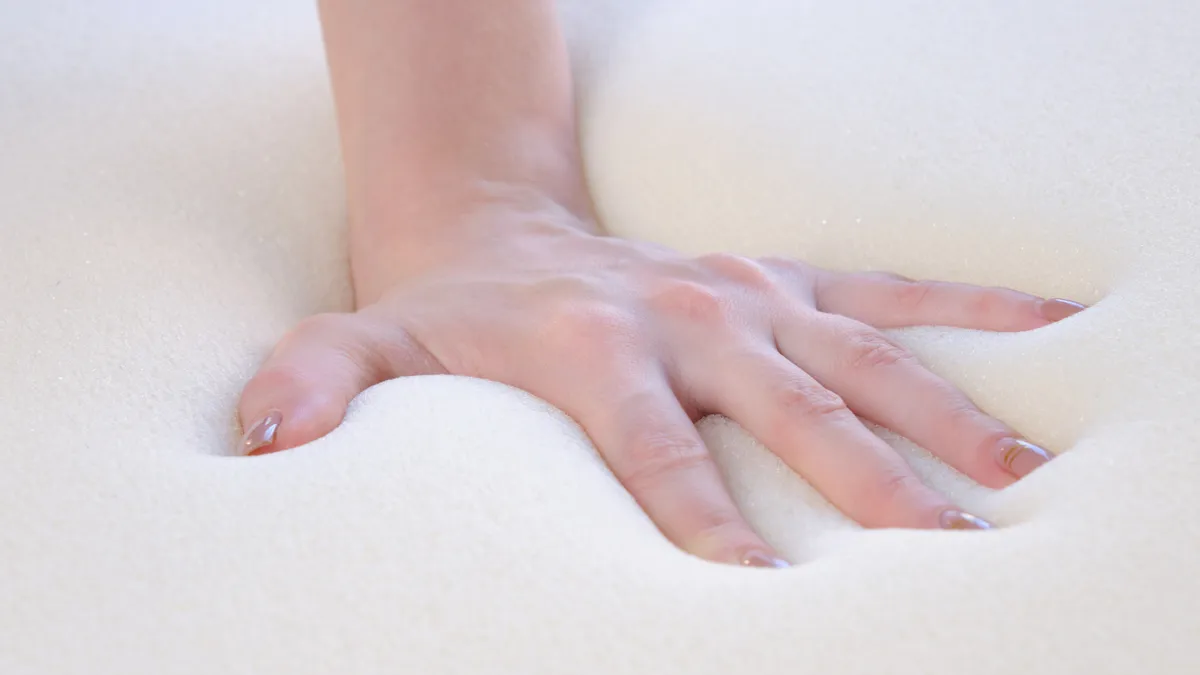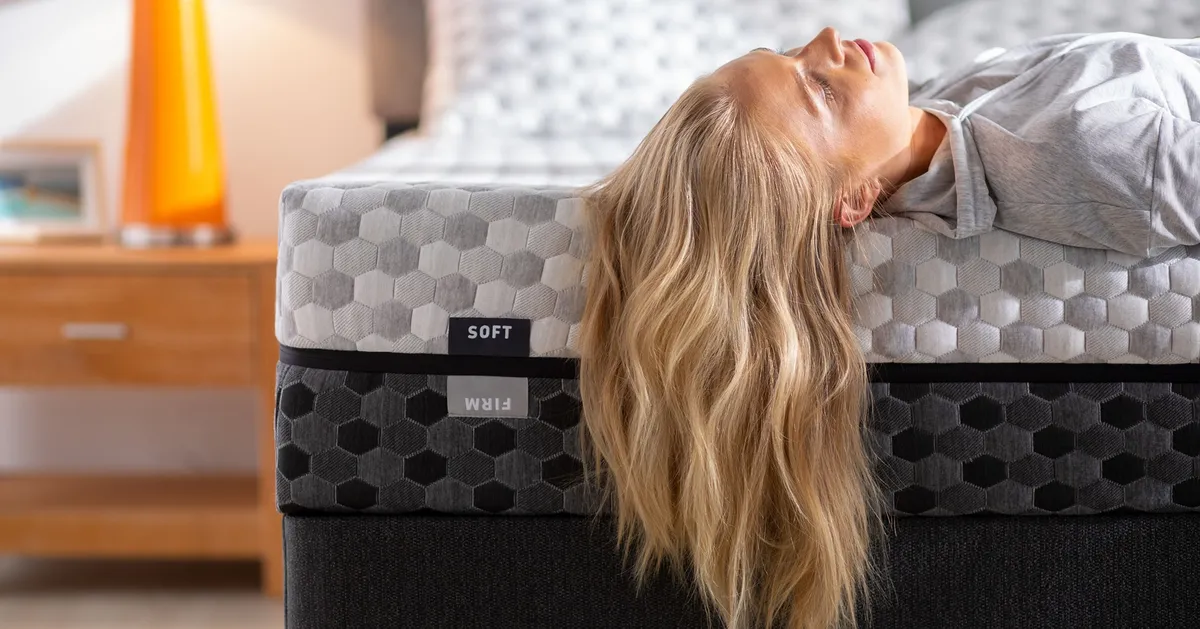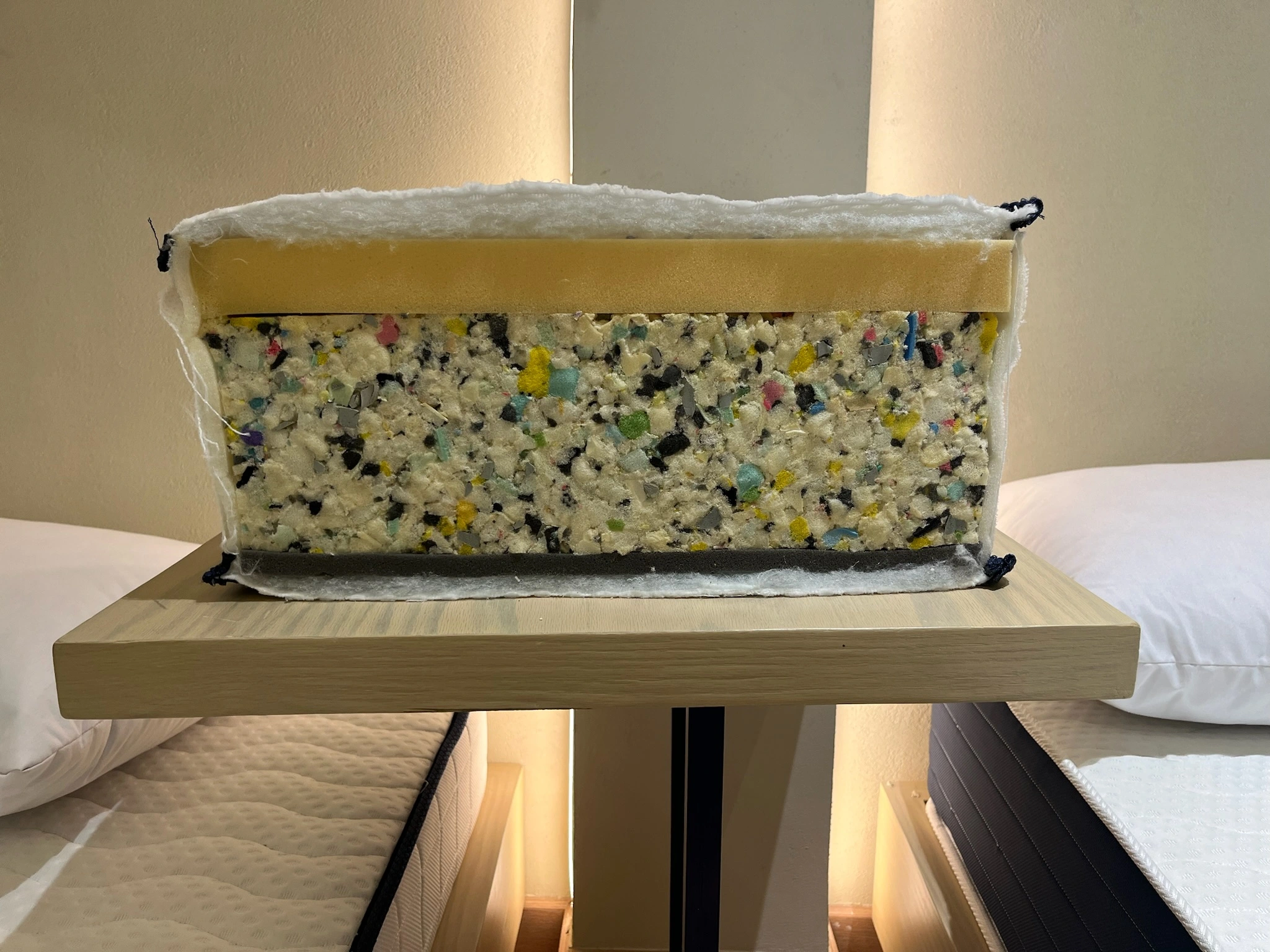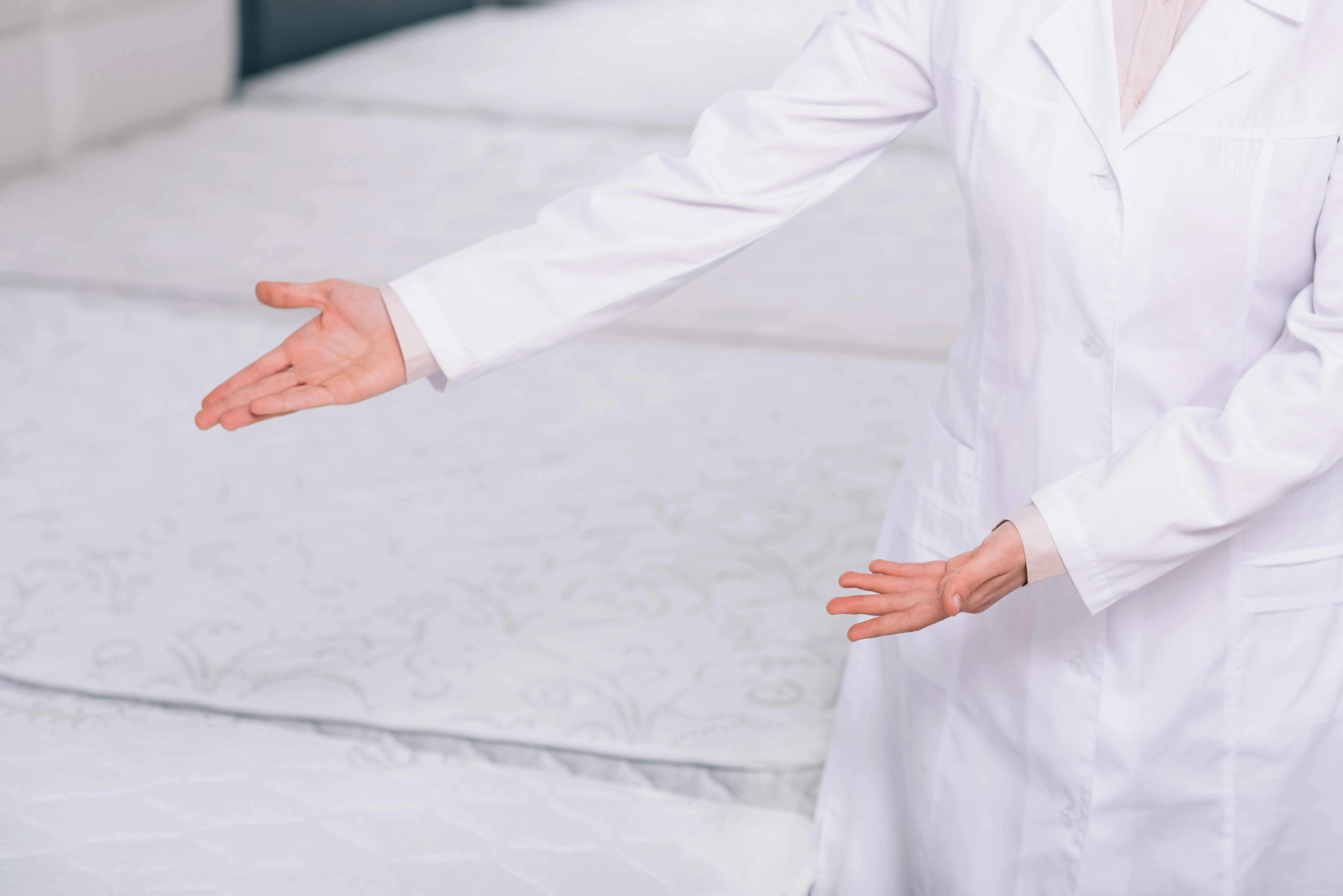The firmness of a mattress influences how well it functions for different types of sleepers. The appropriate firmness level can encourage healthy spinal alignment while cushioning the body. A bed that is excessively soft or too hard, on the other hand, might cause strain or pain over time.
In this article, we'll go over the basic elements of each firmness level to help you understand how mattress firmness affects sleep. Then, we'll look at how they operate for various sleep habits and body types so you can choose the optimal firmness range for you.
What Is Mattress Firmness?
The firmness of a mattress represents how soft or firm it feels when you lie on top of it. While manufacturers will build their beds with a certain firmness in mind, keep in mind that this is subjective. The same mattress might be experienced differently by two people.
Firmness vs. Support
While firmness and support are connected, they are not the same thing. Firmness describes how soft or firm the mattress feels, whereas support describes whether the mattress encourages good spinal alignment. The comfort system is largely in charge of stiffness, while the core is more involved in support. Support does not determine firmness, yet the two can impact one another.

Understanding The Mattress Firmness Scale
| Level | Feel | Meaning |
|---|---|---|
| 1 | Extra Soft | Models that are extra soft sink greatly and adapt to the sleeper's body. |
| 2-3 | Soft | Soft surfaces sink and conform substantially. |
| 4 | Medium Soft | Medium soft mattresses dip somewhat and conform rather closely. |
| 5 | Medium | Medium mattresses sink less but still conform significantly. |
| 6 | Medium Firm | Surfaces of medium firmness do not sink significantly, but they conform considerably. |
| 7-8 | Firm | Firm mattresses feature almost no sinkage and little conforming. |
| Extra firm beds have practically no conforming and no detectable sinkage. | ||
| 9-10 | Extra Firm | Extra firm beds have practically no conforming and no detectable sinkage. |

Extra Soft to Soft (1-3 out of 10)
- Support: For side sleepers weighing less than 130 pounds, softer mattresses are typically more comfortable, but heavier people could sink in too much, endangering their spinal alignment.
- Conforming: Soft mattresses wrap the body tightly, relieving pressure and giving off a comforting feeling. Some people find this claustrophobic, while those who have strong pressure points in their sleep tend to love it.
- Durability: Plush materials used in the construction of softer mattresses can lead to their deterioration. As a result, models in this category do not last as long as those made of firmer materials.
- Cost: Thick comfort layers made of materials that cradle the body are often found in soft and extra-soft mattresses, which increases the price.
Medium Soft to Medium Firm (4-6 out of 10)
- Support: Compared to softer mattresses, medium soft to medium firm mattresses provide moderate support with less sinkage. Individuals who weigh between 130 and 230 pounds often experience a nice blend of support and shaping.
- Conforming: This firmness level of mattresses frequently includes substantial comfort mechanisms that hug the body to release pressure.
- Durability: Stronger materials are usually used in these mattresses, thus they may be more resistant to sagging or early disintegration. Therefore, compared to softer types, medium soft to medium firm mattresses often have a longer lifespan.
- Cost: This type of mattress often has a less complex comfort mechanism, which might result in a reduced price.
7–10 of 10: Firm to Extra Firm
- Support: For sleepers weighing more than 230 pounds, firm to extremely firm mattresses often provide excellent support. A firmer choice could also be preferred by stomach sleepers to prevent waist sinking and encourage healthy spinal alignment.
- Conforming: Thinner comfort layers that don't hug the body are typical of models in this category. Certain people who sleep on their sides, particularly those who weigh less than 230 pounds, may develop pressure points in their shoulders and hips.
- Durability: Because the materials used to make mattresses in this firmness range are often quite robust, these beds may often last longer than softer alternatives.
- Cost: Extra firm and firm mattresses often do not use additional cushioning materials, which makes them less costly than softer choices.
What Determines the Firmness of a Mattress?
The overall firmness of the sleep surface can be influenced by the type of mattress used. Mattresses are classified into four groups based on their materials. Understanding the broad features of these alternatives will help you in predicting how each will feel and behave.
- Innerspring mattresses: were once the most popular type of mattress. A coil support core, normally formed of steel, is used. Though features like coil design influence how a model feels and performs, these beds are recognized for being bouncy, airy, and supportive. Because most innersprings lack broad comfort layers, they tend to be stiffer. If you want to know more about innerspring mattresses click here.

- Hybrid mattresses: combine an innerspring coil support core with the deeper comfort layers of a foam or latex type. These mattresses are designed to give a long-lasting, responsive surface while also contouring to ease pressure. Hybrids are available in several stiffness levels, so most buyers should be able to select a model in their desired range. If you want to know more about hybrid mattresses click here.
- Foam mattresses: are made of foams commonly polyfoam and memory foam. They fit well to the body and give enough pressure relief. All-foam mattresses are often softer than other mattress kinds. If you want to know more about memory foam mattresses click here.

- Latex: is a responsive material that distributes the sleeper's body force across a larger surface, easing pressure while reducing sinkage. Latex beds are also noted for their extraordinary durability. The firmness of latex varies greatly across models, however, Talalay latex is often softer than Dunlop latex. If you want to know more about Latex mattresses click here.
How to Choose the Right Firmness Level
There are several factors to consider before choosing the right mattress for you. If you wanna know more about whether you need a soft, medium, or firmer mattress, you can check our article to further help you: Are Firm Mattresses Healthier than Soft Mattresses?
- Consider Your Sleep Position: Your sleeping position has a significant impact on which bed feels the most comfortable. In general, side sleepers like softer sensations, back sleepers prefer medium, and stomach sleepers prefer firm. Having said that, this may change depending on how much you weigh.
- Temperature Regulation: Overheating is a typical issue that can interfere with healthy sleep. Softer mattresses often contour to the sleeper's body and frequently contain heat-trapping materials, such as memory foam. Firmer mattresses with less sinkage typically sleep cooler because they enable more air circulation around the body.
- Consider Partner’s Preferences: If you share a bed with someone, this will also influence your selection. The majority of mattresses we suggest for couples are medium-firm since they are the most accommodating. In general, medium-firm is the greatest option for co-sleeping.
- Consider Budget: Firmer mattresses with smaller comfort layers are less expensive to build since they utilize less material. Other considerations, such as the usage of specialist components or distinctive designs, might, nevertheless, influence pricing.
- Consider Your Weight (More info below): Your body type may influence which firmness is most comfortable for you. Because each person adds a different amount of pressure to the sleep surface depending on their weight, the same mattress may seem softer to a bigger person and firmer to a lighter one. While everyone's tastes are different, recognizing the function weight plays in the sleeping experience will help you decide what's ideal for you.
- Mattress Weight: Heavier mattresses may be more difficult to put up or transport. Softer models are typically thicker and heavier, especially if latex or coil layers are used.
Body Weight and Firmness Levels
Sleepers of all weights choose a mattress that balances contouring and support to relieve discomfort while encouraging excellent posture. Sleepers who weigh less often demand a softer mattress, whilst those who weigh more require stronger support.
Weight distribution might also have an impact on stiffness preferences. A tall person's weight, for example, is distributed across a significantly wider surface area than that of a short one. As a result, the same mattress may seem firmer to a tall sleeper of the same weight than to a short sleeper of the same weight.
| Weight | Preference | Best Firmness Levels |
|---|---|---|
| Less than 130 lbs. | Sleepers in this weight range typically choose softer, more conforming mattresses. | • Soft (2-3) |
• Medium Soft (4) • Medium (5) | | 130 to 230 lbs. | This weight group of sleepers often prefers a softly conforming surface with somewhat stronger support. | • Medium Soft (4) • Medium (5) • Medium Firm (6) | | 230 lbs + | For improved spinal support, this weight group prefers stiffer surfaces that do not conform as tightly. | • Medium Firm(6) Firm (7, 8)Extra Firm (9, 10) |
Ideal Mattress Firmness for Different Sleepers
Best Firmness Levels for Side Sleepers
Side sleepers put a lot of strain on their hips and shoulders. Overly firm mattresses can throw the spine out of alignment and create pressure accumulation in certain places. An overly soft sleep surface, on the other hand, might cause bad posture due to excessive drooping. Sleepers who like to sleep on their sides benefit from plusher surfaces that cushion or cradle their bodies. Many side sleepers prefer firmness levels ranging from soft (2) to firm (7), depending on their weight.
Best Firmness Levels for Back Sleepers
Back sleepers want a little firmer mattress that prevents drooping in the middle. While supporting the lumbar area, subtle cradling helps keep the spine in a more neutral position. Mattresses that are overly soft or too hard may cause lower back pain. Firmness ratings ranging from medium (5) to firm (8) are preferred by back sleepers.
Best Firmness Levels for Stomach Sleepers
Stomach sleeping is not recommended for most people because of the risk of strain. A mattress with insufficient support might cause the stomach to sink, resulting in an abnormal arch in the lower back that can cause discomfort. As a result, stomach sleepers choose firmer models than side or back sleepers. Depending on the weight of the sleeper, a grade between medium-firm (6) to extra-firm(9) may be appropriate.
FAQs
Does memory foam always mean soft?
A mattress does not always have to be softer than usual just because it has memory foam or soft foam in it. It is mostly dependent upon the thickness of the comfort layer. Some mattresses, for example, are extremely firm and have a layer of memory foam on top.
What does a plush mattress mean?
Plush mattresses are soft sleeping surfaces that relieve pressure points and reduce motion transfer. Some people sleep best on a soft, plush mattress, including those who prefer to sleep on their side or back. Plush mattresses provide excellent shoulder and hip pressure alleviation for side sleepers.
Does the Firmness Level Affect Durability?
Durability isn't all about firmness. However, firmer mattresses often use denser, sturdier materials like innerspring coils and high-density foams. These materials can withstand more weight and pressure without sagging or losing their shape.
What if My Partner and I Have Different Firmness Preferences?
Buying a split king mattress is an additional choice for couples with different firmness preferences. Two twin XL mattresses arranged side by side make up the "split king" size. You may put two different mattresses on your split king to accommodate your individual sleeping preferences.
Is it better to sleep on a firm or soft mattress?
A softer mattress could be more comfortable for certain people and aid in pressure alleviation, claims. However since it maintains the spine's natural alignment, a firm mattress is beneficial for those who suffer from joint discomfort. It can also regulate temperature more effectively and is more resilient. If you need more help consider reading this article.
What is the most preferred mattress firmness?
The most common mattress firmness is medium-firm. On a hardness scale of 10 being the firmest, most mattress companies rate medium-firm at 6 out of 10. Eighty percent of sleepers choose firmness levels between five and seven. Very firm or very soft mattresses are not necessary for most sleepers.
What firmness is best for all sleep positions?
A medium mattress offers you the best of both worlds since it's neither too soft nor too stiff. If you and your partner sleep in various positions, this is an excellent option.
What firmness do hotel beds use?
To accommodate as many various types of visitors as possible, medium-firm mattresses are used in most hotels. Additionally, hoteliers need to select mattresses that will be able to last long because hard mattresses often last longer than soft ones.
How do you tell if your bed is too firm or too soft?
While not definitive, this can offer a basic indication. Place your hand between the mattress and your lower back. If you have trouble fitting it in, the mattress might be too firm. Conversely, if your hand passes through easily, it could be too soft.
Conclusion
Although it's only one component of the picture, mattress firmness plays a big role. Every sleeper has a different experience with firmness. When you buy a mattress, keep in mind that firmness and support are related. Firmness refers to the degree of softness or hardness of a bed.
Although you are more likely to enjoy a medium-firm mattress statistically, you could discover that softer or harder versions work better for you. Depending on your weight, sleeping position, if you share a bed with someone and any discomfort you may be suffering, you may choose the appropriate level of firmness.
Dom Abraham
As the lead content writer at Sleepiverse. Dom pours his heart into writing mattress reviews, bedding product reviews, and medically-reviewed health articles. Dom is from Portugal and likes to spend his free time writing on the beach as it gives him a sense of comfort. Aside from writing mattress reviews in front of the soothing beach view, Dom likes to experiment with new amazing food ideas.


